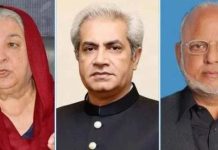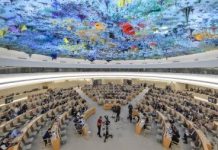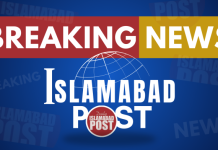During the second quarter of 2024, Pakistan witnessed 380 violence-linked fatalities and 220 injuries among civilians, security personnel, and outlaws, resulting from as many as 240 incidents of terror attacks and counter-terror operations.This includes 236 fatalities among civilians and security forces personnel.
The northwestern Khyber Pakhtunkhwa (KP) and the southwestern Balochistan provinces – both bordering Afghanistan, were the epicenters of violence, accounting for nearly92% of all fatalities and 87% of attacks (including incidents of terrorism and security forces operations) during this period.
Individually, the former suffered 67% and the latter 25% of all fatalities in Q2, 2024.
The data indicates that the remaining regions were relatively peaceful, suffering only 8% of all fatalities.

Violence and Casualty Rates Across the Country Plummeted in Q2, 2024
- Reduction in Overall Violence: The country experienced a 12% reduction in overall violence, with 380 fatalities recorded compared to 432 in Q1 2024.
- Sharp Decline in Casualties: A similarly encouraging trend can be observed in terms of casualties recorded throughout the country which dropped significantly, from 802 in Q1 to 600 in Q2 2024, marking a substantial 25% decline.
Regional Success Stories
- Balochistan Leads with Remarkable Improvement:
- Balochistan: The most notable improvement was seen in Balochistan, where violence decreased by 46%, with fatalities falling from 178 in Q1 to 96 in Q2 2024.
- Sindh: Violence in Sindh also saw a notable decline of 32%.
- GB and ICT: Similar downward trends were reported.

However, Punjab and KP experienced a surge in violence, with an increase of 13 and 31 fatalities, respectively, compared to the previous quarter.
Who Suffers Most: A Breakdown of Fatalities
• Outlaws Hit Hardest:
o Outlaws accounted for the majority of fatalities (38%), followed by civilians (32%) and security and government officials (30%).
o Compared to Q1, civilian and security forces’ fatalities decreased by 21% and 10%, respectively, while militant fatalities increased by 29%. Notably, only 2 insurgents were killed in Q2, a sharp decline from 41 in Q1.
Despite these positive trends, some concerning patterns were also observed:
Worrying Trends Amidst the Progress
• Fatal Losses Among Civilians and Security Personnel:
o Civilians, government officials, and security personnel suffered 62% of all fatalities, significantly higher than the 38% fatal losses among outlaws.
o Civilians suffered the highest number of militant and insurgent attacks.
Imbalance in Attack Dynamics
• Terror Attacks Outnumber Counter-Terror Operations:
o Terrorist attacks on civilians, government officials, and security personnel outnumbered counter-terror operations against outlaws by more than four times (195 vs. 45)

Other Trends
Among the civilian fatalities, there were 24 workers who were targeted in Balochistan and KP due to their ethnic identities in addition to 4 coal miners and two polio workers.
Eleven persons lost their lives at the hands of sectarian violence including 5 Sunnis, 2 Ahmadis, 1 Christian, and three persons were reported to have been killed due to sectarian violence but their religious identities were not declared.
Police and army personnel became frequent targets of terrorist attacks. There were two DSP’s among the police officials who lost their lives while 31 cops were also victims of violence. Nearly 65 soldiers and including Army Captain lost their lives while a former Brigadier, Ameer Hamza, also got fatally ambushed by unidentified target killers.


















